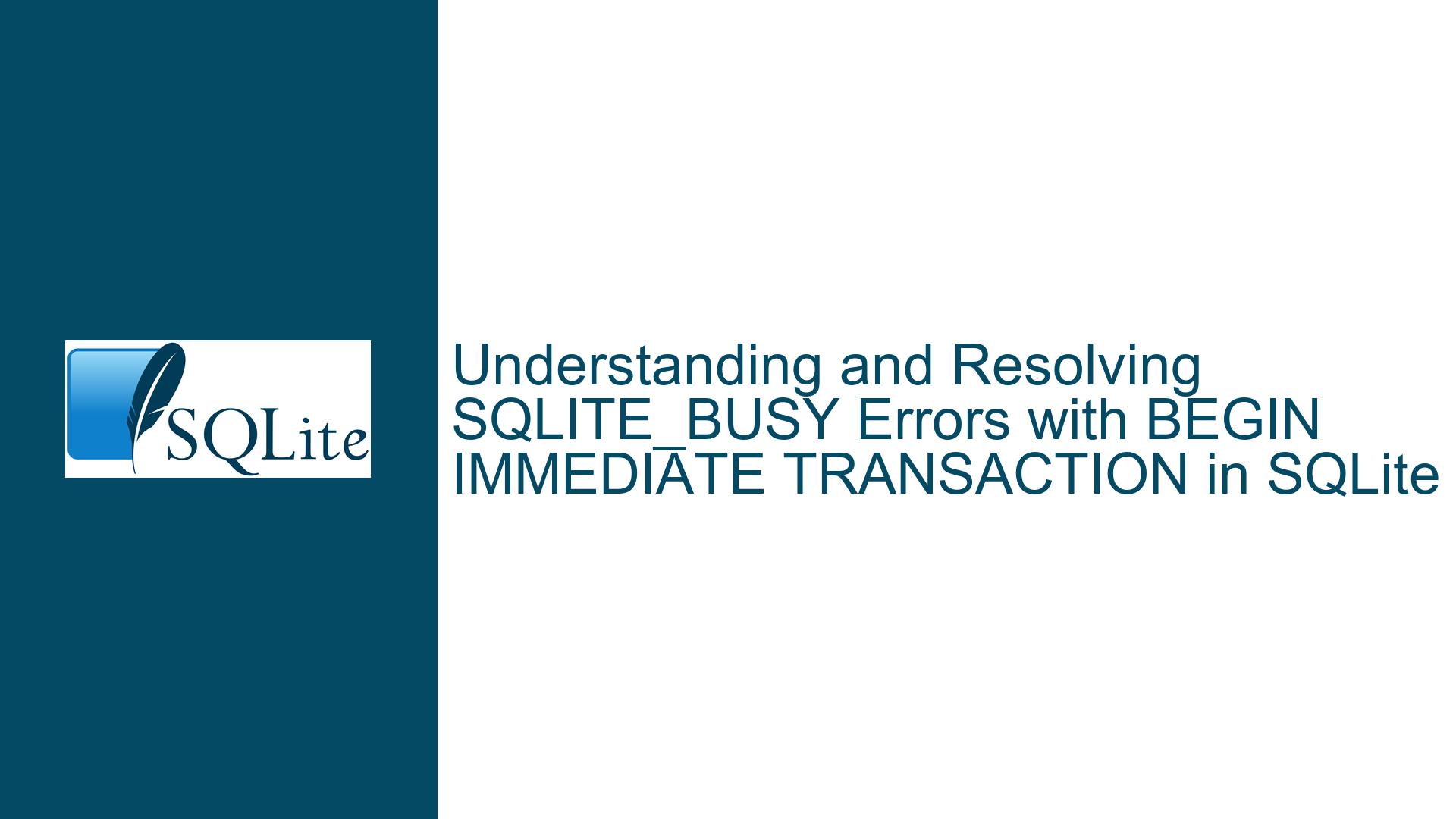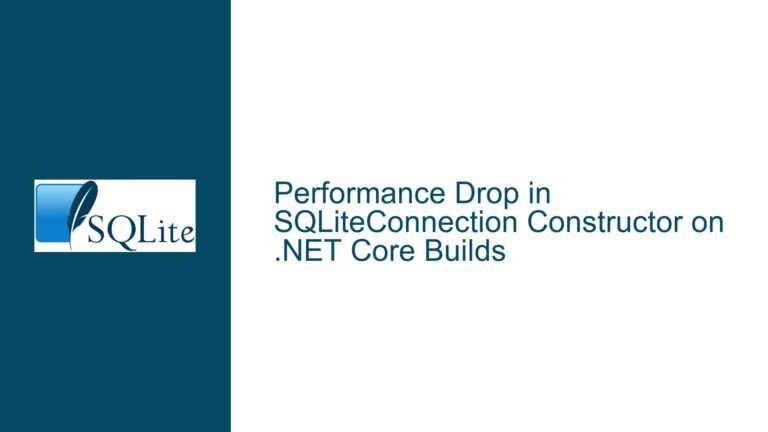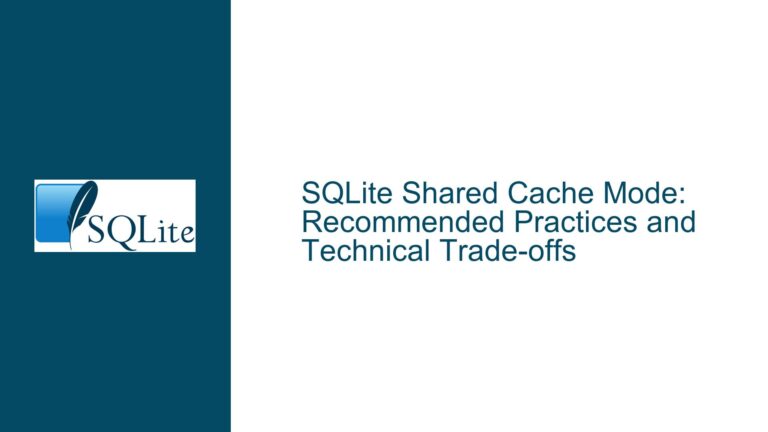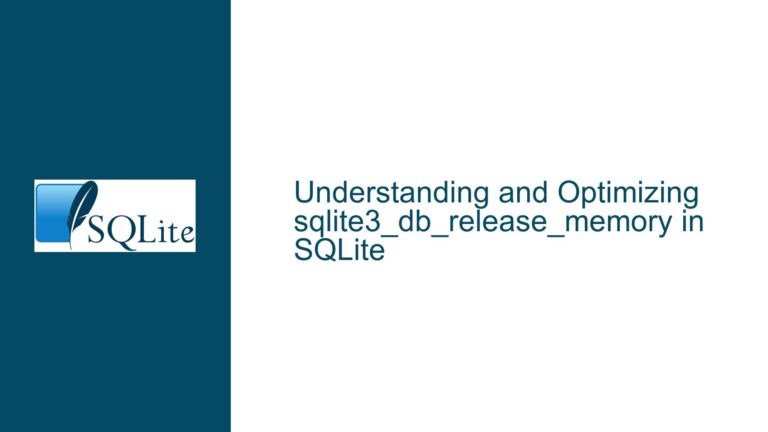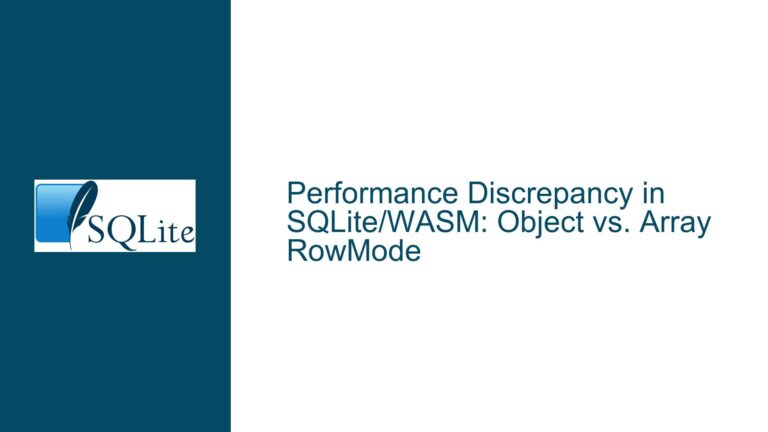and Resolving SQLITE_BUSY Errors with BEGIN IMMEDIATE TRANSACTION in SQLite
The Role of BEGIN IMMEDIATE TRANSACTION in Preventing SQLITE_BUSY Errors
SQLite is a lightweight, serverless database engine widely used in applications ranging from embedded systems to web applications. One of its key features is its transactional model, which ensures data integrity and consistency. However, SQLite’s locking mechanism can sometimes lead to the SQLITE_BUSY error, particularly in scenarios involving concurrent write operations. This error occurs when a transaction cannot acquire the necessary locks to proceed, often due to conflicts with other transactions. Understanding how to prevent this error is crucial for developers working with SQLite in multi-threaded or multi-process environments.
The BEGIN IMMEDIATE TRANSACTION statement plays a critical role in mitigating SQLITE_BUSY errors. Unlike the default BEGIN TRANSACTION, which starts a transaction in read mode and upgrades it to write mode only when a write operation is detected, BEGIN IMMEDIATE TRANSACTION immediately acquires a write lock at the start of the transaction. This proactive approach prevents conflicts with other transactions that might attempt to acquire write locks concurrently, thereby reducing the likelihood of SQLITE_BUSY errors.
The challenge lies in the fact that this behavior is not immediately obvious from the SQLite documentation, and developers often encounter SQLITE_BUSY errors without understanding their root cause. This post aims to provide a comprehensive guide to understanding and resolving SQLITE_BUSY errors by leveraging BEGIN IMMEDIATE TRANSACTION.
How SQLite’s Locking Mechanism and Transaction Modes Contribute to SQLITE_BUSY Errors
SQLite employs a file-based locking mechanism to manage concurrent access to the database. This mechanism includes several lock states: UNLOCKED, SHARED, RESERVED, PENDING, and EXCLUSIVE. Transactions transition through these lock states as they perform read and write operations. The default BEGIN TRANSACTION starts in SHARED mode, allowing multiple transactions to read from the database simultaneously. However, when a transaction needs to perform a write operation, it must upgrade to RESERVED mode and eventually to EXCLUSIVE mode to commit the changes.
This upgrade process is where the potential for SQLITE_BUSY errors arises. If another transaction holds a RESERVED or EXCLUSIVE lock while the first transaction attempts to upgrade, the first transaction will be unable to proceed and will return a SQLITE_BUSY error. This situation is particularly common in applications with high concurrency, such as web servers handling multiple simultaneous requests.
The BEGIN IMMEDIATE TRANSACTION statement addresses this issue by starting the transaction in RESERVED mode, effectively reserving the right to upgrade to EXCLUSIVE mode when needed. This approach ensures that no other transaction can acquire a conflicting lock, thereby preventing SQLITE_BUSY errors. However, it also means that the transaction must be explicitly marked as a write transaction from the outset, which requires careful planning and design.
Best Practices for Using BEGIN IMMEDIATE TRANSACTION to Avoid SQLITE_BUSY Errors
To effectively use BEGIN IMMEDIATE TRANSACTION and avoid SQLITE_BUSY errors, developers should follow a set of best practices. First, identify all transactions that involve write operations, such as INSERT, UPDATE, or DELETE. These transactions should be explicitly started with BEGIN IMMEDIATE TRANSACTION to ensure that they acquire the necessary locks upfront.
Second, minimize the duration of write transactions to reduce the likelihood of conflicts. Long-running write transactions increase the chances of other transactions encountering SQLITE_BUSY errors. Break down large transactions into smaller, more manageable units where possible, and commit changes as soon as they are no longer needed.
Third, implement retry logic for transactions that may still encounter SQLITE_BUSY errors due to high concurrency. While BEGIN IMMEDIATE TRANSACTION significantly reduces the risk of these errors, they can still occur in extreme cases. A well-designed retry mechanism can help handle such scenarios gracefully, ensuring that transactions eventually succeed without causing application failures.
Finally, monitor and analyze the performance of your SQLite database to identify potential bottlenecks and optimize transaction handling. Tools like the SQLite command-line interface and third-party monitoring solutions can provide valuable insights into lock contention and transaction behavior, enabling you to fine-tune your application for optimal performance.
By following these best practices and leveraging BEGIN IMMEDIATE TRANSACTION, developers can effectively prevent SQLITE_BUSY errors and ensure the smooth operation of their SQLite-based applications. This approach not only enhances reliability but also improves the overall user experience by reducing the likelihood of transaction failures and retries.
